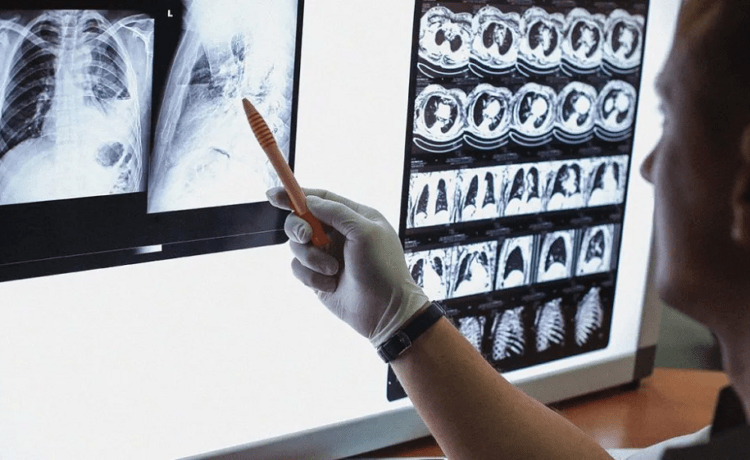Introduction
It is pervasive to have NSCLC. Few people are smoking cigarettes, in part because of preventive measures. However, disease rates have decreased over time and, ideally, will continue to do so.
Even though many patients with lung cancer were never smokers, cigarette smoking is the leading cause of lung cancer.
Zeeva
We are well known for our clinical quality and individualized care. The facility is outfitted with cutting-edge technology and is situated in a famous area of Noida.
Treatment is currently underway.
- Knowing where NSCLC treatment is now and where it is going will help. The extent of the illness and the molecular mutations present in cancer are the two key factors we must evaluate when someone is detected to choose a therapeutic strategy.
- The most usual treatment is surgery to fix a portion of the lungs, or even all of them when the illness is still in its early stages and hasn’t progressed beyond its initial site of establishment.
- One of the significant challenges in treating lung cancer is that most patients aren’t found until their illness has progressed past this phase.
- Since we’ve been working to detect lung cancer sooner, surgical procedures are still an option for treatment. With proper screening, we think we can treat more people.
- Treatment is a little more challenging for patients whose sickness has spread outside the lung to ingest a localized or nearby area. However, we continue to examine it to cure it.
- Surgery, radiation, chemotherapy, and immunotherapy are combined. Local therapy is unsuccessful in cases of metastatic illness, where cancer has progressed outside the chest.
- After that, we consider those that will work across the entire system. It may refer to targeted therapies, immunotherapies, or additional chemotherapy, sometimes known as cytotoxic chemotherapy.
Growths in Treatment:
- The application of targeted medicines has advanced considerably. We don’t mean physically focused because radiation is when we say theories are targeted. Instead, we imply that they are considered anomalies in each person’s tumor.
- We made strides with medications that targeted proteins known as epidermal growth factor receptors less than 20 years ago. A protein called EGFR is found on the surface of cells and aids in cell growth and division.
- We realized that tumors with an EGFR mutation or gene exchange responded to EGFR-inhibiting medications. This manual led to the identification of numerous other modifications and the development of seven novel FDA-approved treatments for these particular alterations.
- Our diagnostic workup has no approved tests that look for these variations so that we can move on with the right medicine. Nearly 20% of Americans with lung cancer can now be treated with these drugs, significantly improving their prognosis.
Where treatment is headed
- Strategies under development will enhance the three primary forms of systemic therapies—chemotherapy, immunotherapy, and targeted therapy—that affect the entire body.
- The critical development in chemotherapy is something we refer to as an antibody-drug association. These are medications that, in essence, link chemotherapy with an immune response.
- There are additional initiatives to increase the variety of mutations that can be successfully treated with targeted therapies and to enhance the currently available medications.
- And about immunotherapy, which encourages the immune system to fight the illness, we’re working to influence the immune system to treat cancer. Drugs that target different aspects of immune reactions are frequently used.
Looking to the future
In terms of the future of NSCLC, a successful screening program might treat more patients, for instance, through surgery.
Additionally, some of our contemporary treatments reduce the likelihood that a disease may recur in patients who have had surgery for the local central disease or, at the very least, delay illness return.
Even those with severe conditions are more likely to survive the long term, thanks to chemotherapy. Long-term survival was unusual before this.
The ability to view NSCLC as a “continuous” disease is what we aim to achieve. It means that, with time and the proper care, those with it can enjoy completely everyday lives.
The cancer cell eventually finds a solution. There still has to be silence. However, we are making progress toward making it an irreversible illness, and we aspire to go even further.
Treatment
The dissection, phase, general health, and concurrent conditions of the patient all affect the treatment options suggested by the best oncologist in Noida. The following are some of the methods used to find out if cancer is present:
- Physical exam.
- Routine tests in the lab.
- A chest x-ray.
- A separate substance is infused during a chest CT scan.
A skilled pathologist must evaluate the pathological material before a patient starts lung cancer treatment. It is crucial because microscopic diagnostics can mistake SCLC for NSCLC, a cancer that responds well to treatment and is typically not treated surgically under lung cancer treatment in Noida.







